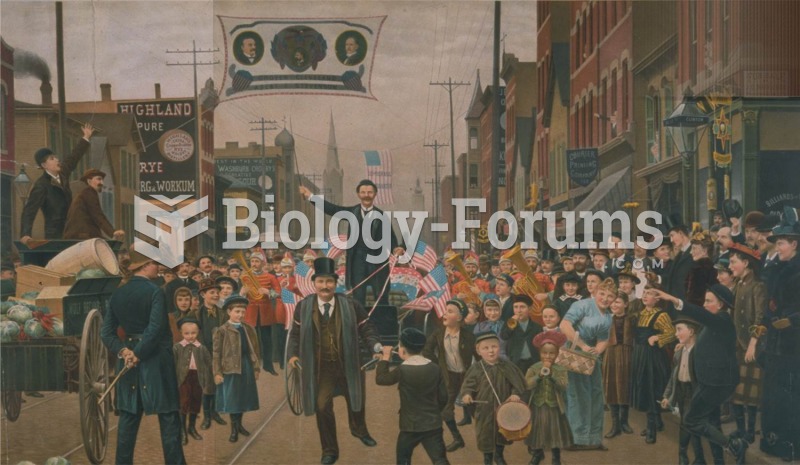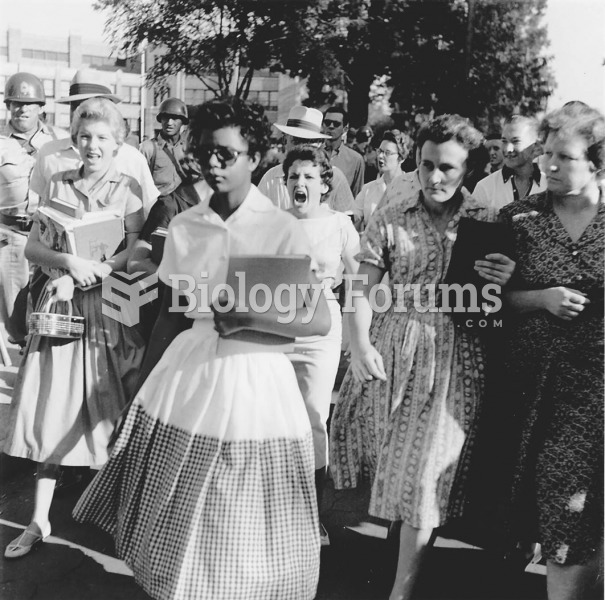|
|
|
Most strokes are caused when blood clots move to a blood vessel in the brain and block blood flow to that area. Thrombolytic therapy can be used to dissolve the clot quickly. If given within 3 hours of the first stroke symptoms, this therapy can help limit stroke damage and disability.
Cytomegalovirus affects nearly the same amount of newborns every year as Down syndrome.
The longest a person has survived after a heart transplant is 24 years.
The average office desk has 400 times more bacteria on it than a toilet.
Blastomycosis is often misdiagnosed, resulting in tragic outcomes. It is caused by a fungus living in moist soil, in wooded areas of the United States and Canada. If inhaled, the fungus can cause mild breathing problems that may worsen and cause serious illness and even death.
 American soldiers—some of them regulars in deep blue uniforms, others in buckskin cowboy outfits— fi
American soldiers—some of them regulars in deep blue uniforms, others in buckskin cowboy outfits— fi
 New Yorkers flee from the dust caused by the collapse of the twin towers of the World Trade Center f
New Yorkers flee from the dust caused by the collapse of the twin towers of the World Trade Center f
 A parade for Grover Cleveland in Chicago in 1892, by John Klir. Music, mirth, real drama—a president
A parade for Grover Cleveland in Chicago in 1892, by John Klir. Music, mirth, real drama—a president




